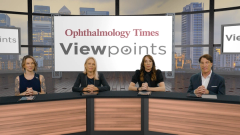
Understanding Tear Composition and Function in Dry Eye Disease
Donaldson introduces the panel and outlines the series’ focus on improving dry eye management through tear function optimization.
Episodes in this series

The Viewpoints series “Reimagining Dry Eye Management: Targeting Tear Function for Sustained Relief” convenes leading experts in ophthalmology and optometry to discuss evolving perspectives on dry eye disease (DED). Under the moderation of Kendall Donaldson, MD, MS, the panel—comprising Cecelia Koetting, OD, FAAO; Selina McGee, OD, FAAO; and Karl Stonecipher, MD—begins with foundational topics on diagnosis and management, stressing the need to identify underlying etiologies and distinguish between aqueous-deficient and evaporative dry eye types. They explore how differences in tear composition and patient-specific factors influence therapeutic decisions and address the frustrations patients often experience with limited or short-lived relief from traditional therapies.
In the second part, the discussion turns to emerging DED therapies that target tear function and ocular surface homeostasis. The panel reviews the mechanisms, efficacy, and tolerability of novel treatments, including perfluorohexyloctane (Miebo), cyclosporine ophthalmic solution 0.1% (Vevye), and the newly FDA-approved acoltremon ophthalmic solution (Tryptyr), a TRPM8 agonist. They consider how neurogenic stimulation of the lacrimal unit may enhance tear stability and compare clinical trial outcomes—particularly the COMET-2 and COMET-3 studies—highlighting the importance of balancing objective and subjective end points such as Schirmer test and SANDE scores.
Finally, the conversation addresses real-world integration of these innovations. The experts discuss setting realistic patient expectations, managing adherence, and adopting monitoring strategies that optimize long-term care. They explore how rapid symptom relief affects satisfaction, outline current unmet needs in DED treatment, and share guidance for incorporating new therapeutics into daily practice. The series concludes with closing reflections from each panelist and a brief media engagement encouraging peer connection and dissemination of insights through professional networks.
Newsletter
Don’t miss out—get Ophthalmology Times updates on the latest clinical advancements and expert interviews, straight to your inbox.






































